The Battle of Le Quesnoy
Before The Battle
The following six postcards from before the battle show the objective that the New Zealanders had to take
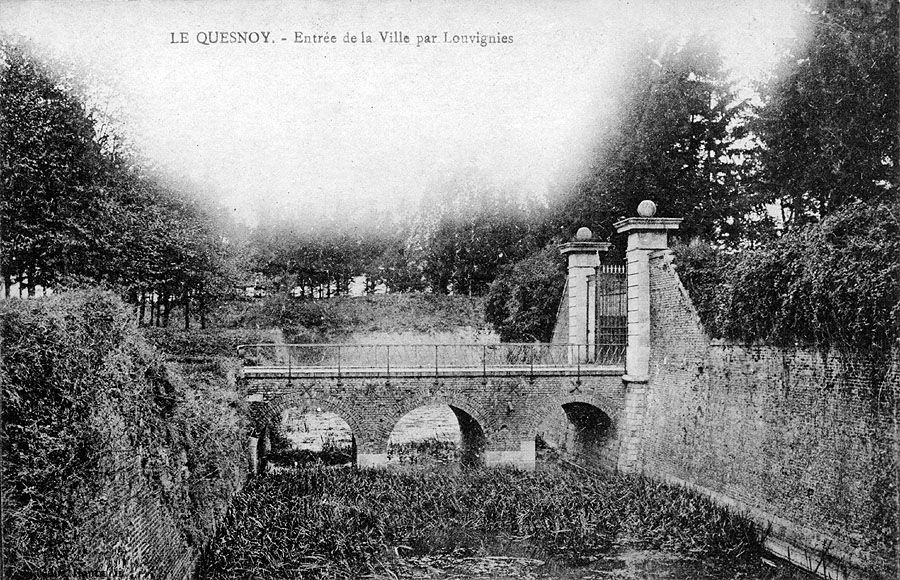
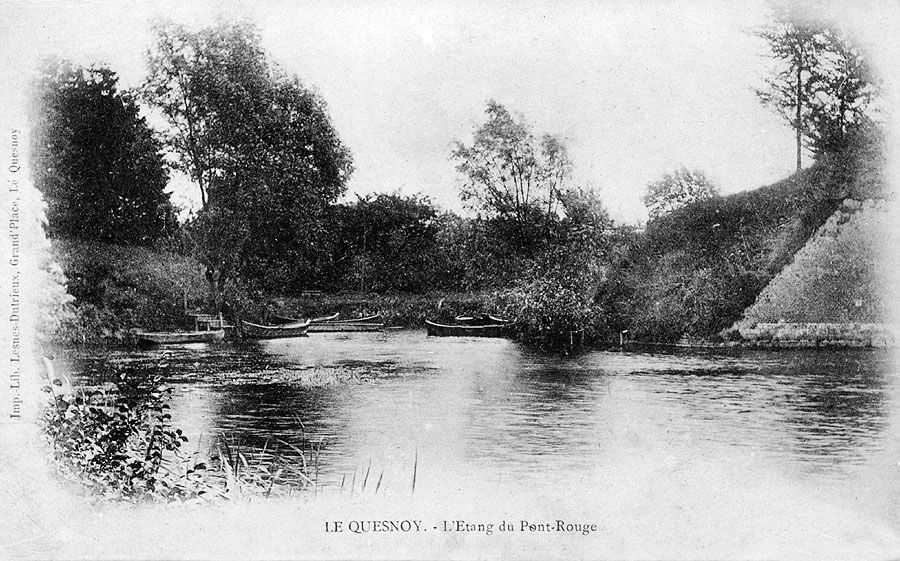
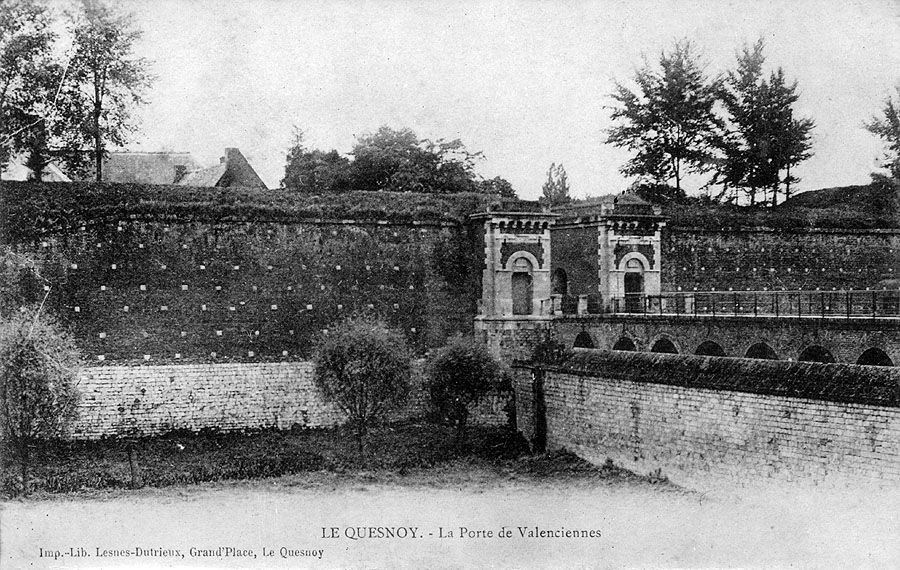
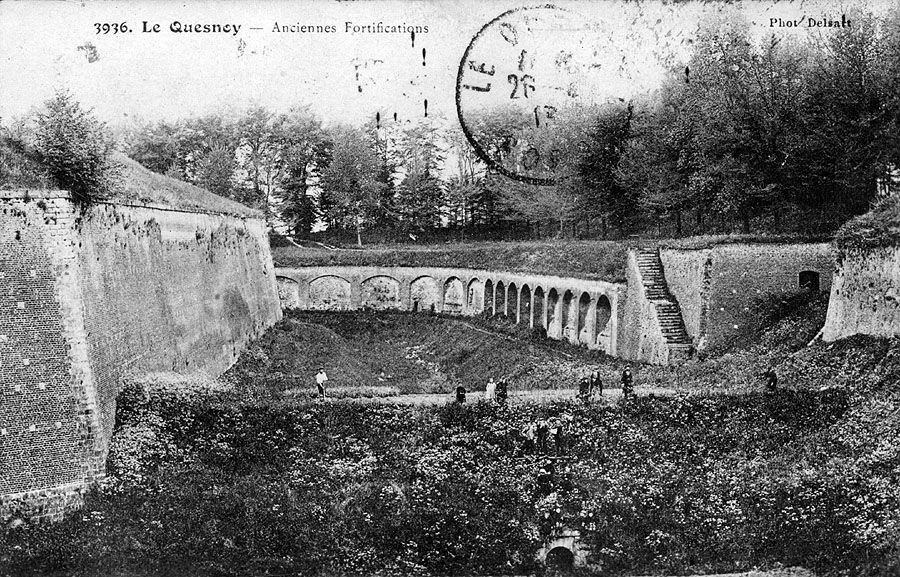

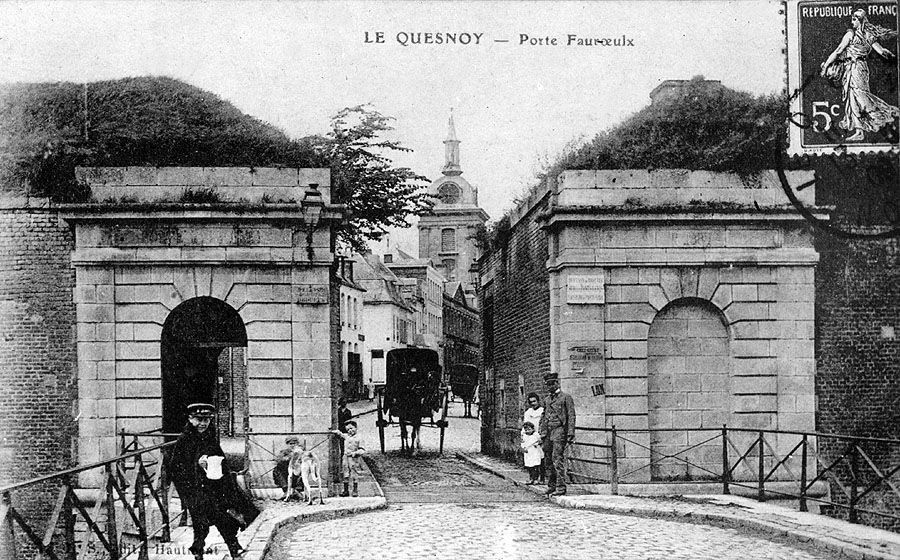
The German Occupation
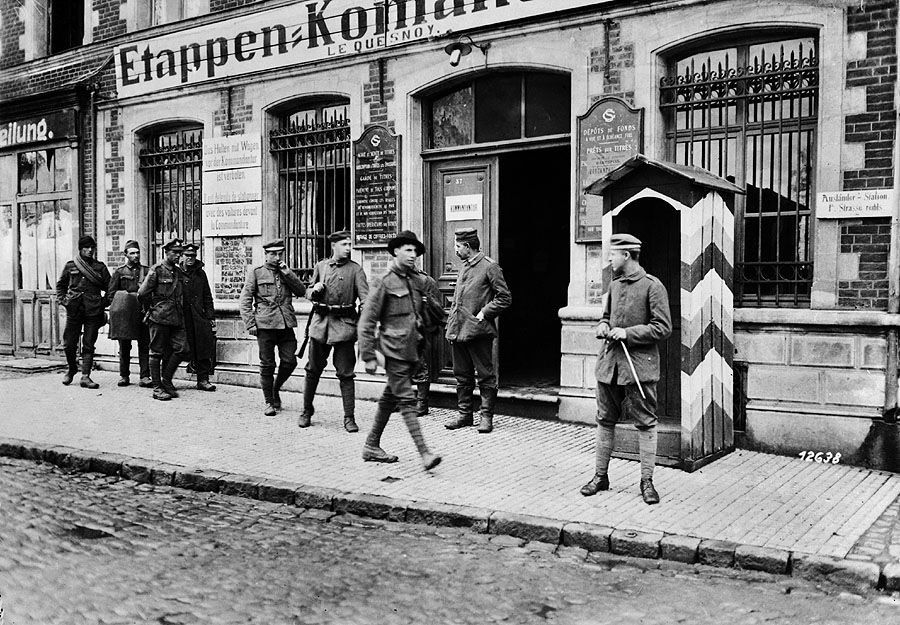
Though the date is unknown, this photo is believed to have been taken during the occupation by German forces shows German soldiers with British prisoners of war (seen on the left and in the centre wearing putties), outside of what looks to be a German headquarters building. The words in large letters 'Etappen Kommandantur' on the building above the town's name mean Sector Commander. Photo via Richard Stowers
The Battle for Liberation
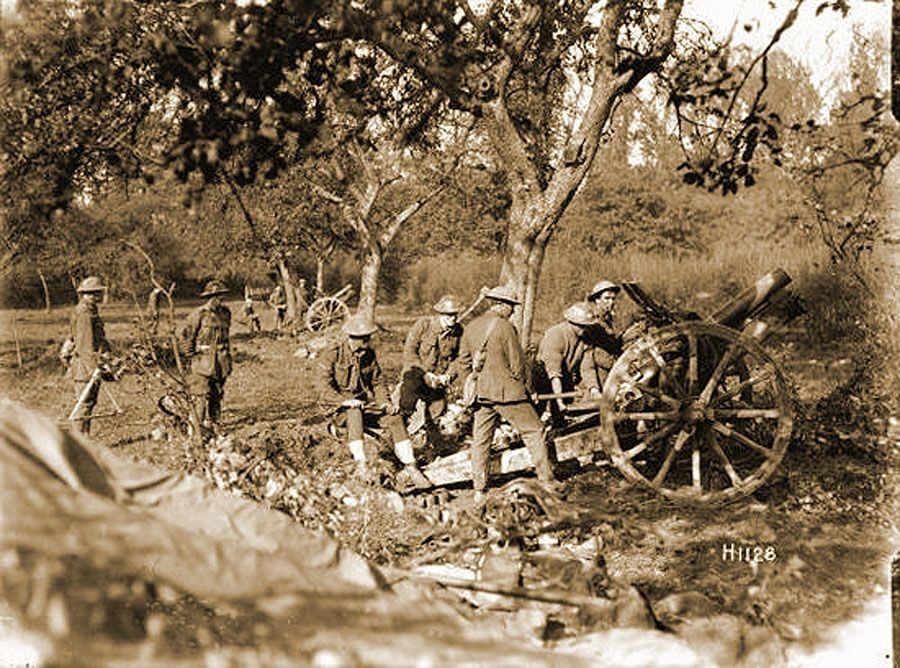
Units of the New Zealand Field Artillery take up position around Le Quesnoy
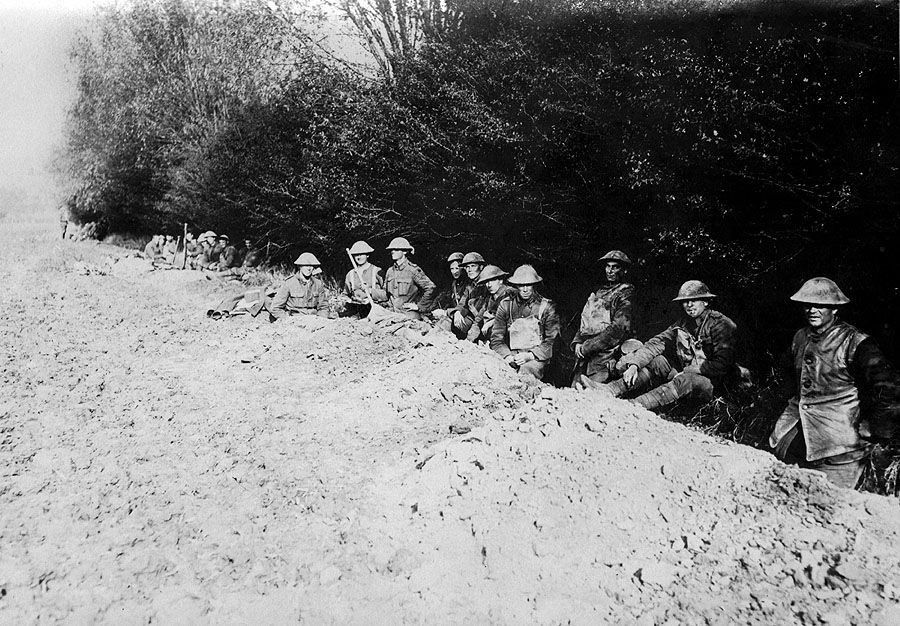
New Zealand Division's support line troops wait in a ditch the provides them cover
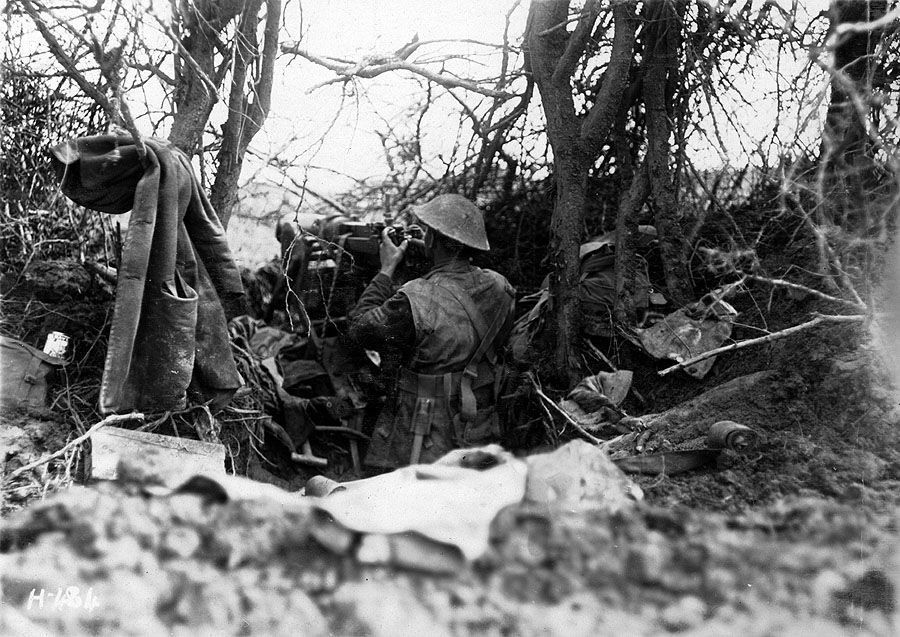
A New Zealand machine gunner mans his Maxim gun from behind the cover of a hedgerow

New Zealand troops rest in a trench during the battle
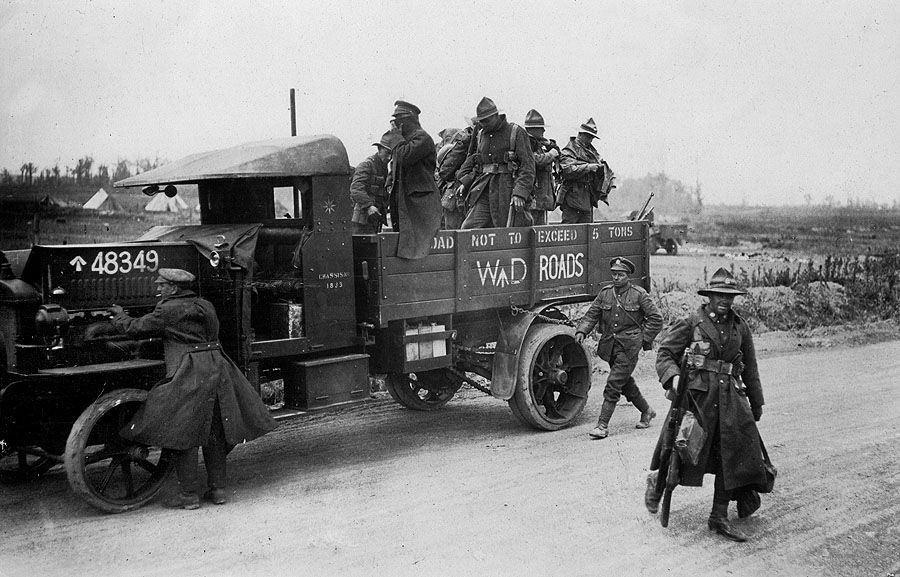
Kiwi soldiers arrive on the scene aboard a truck
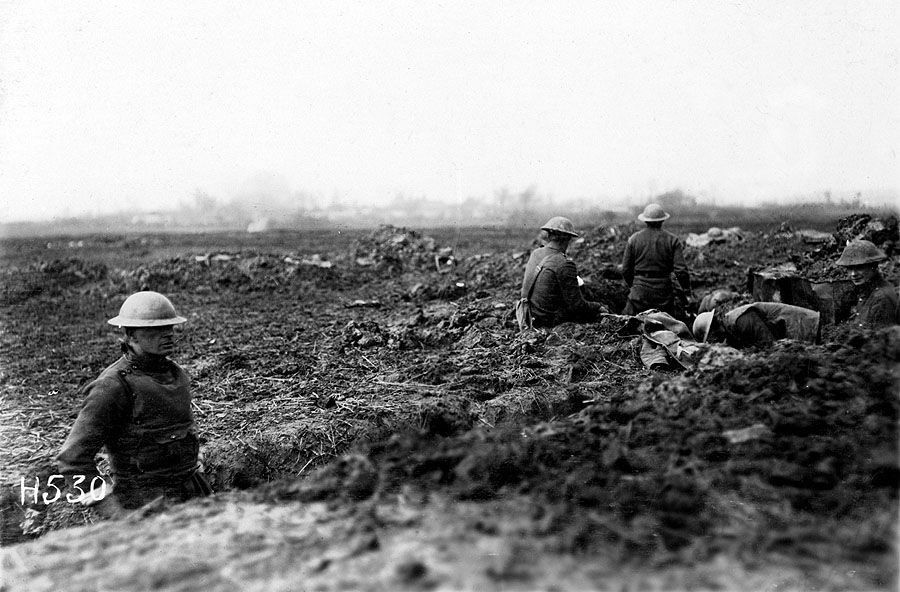
An open trench provides little cover for these soldiers

Members of the New Zealand Rifle Brigade who had a big hand in the capture of Le Quesnoy resting before their next onslaught
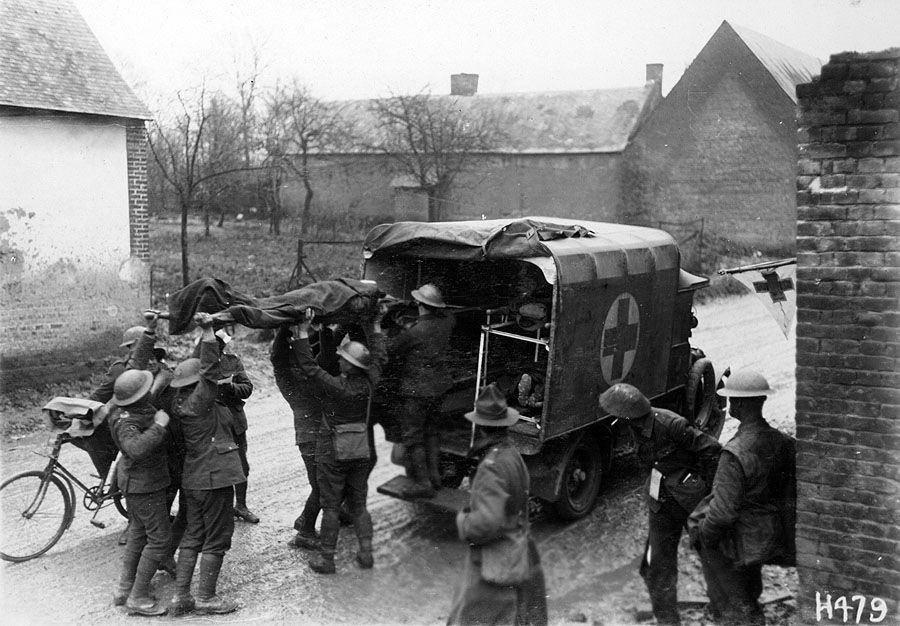
Wounded soldiers are loaded aboard an ambulance to be rushed to the nearest field hospital
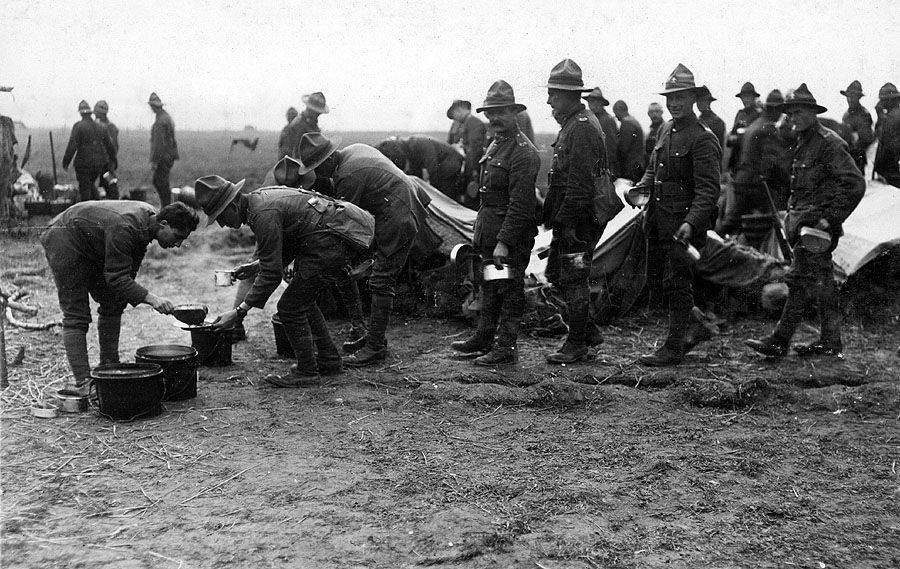
Kiwi troops queue up for a much deserved meal and a hot drink in the field during the battle
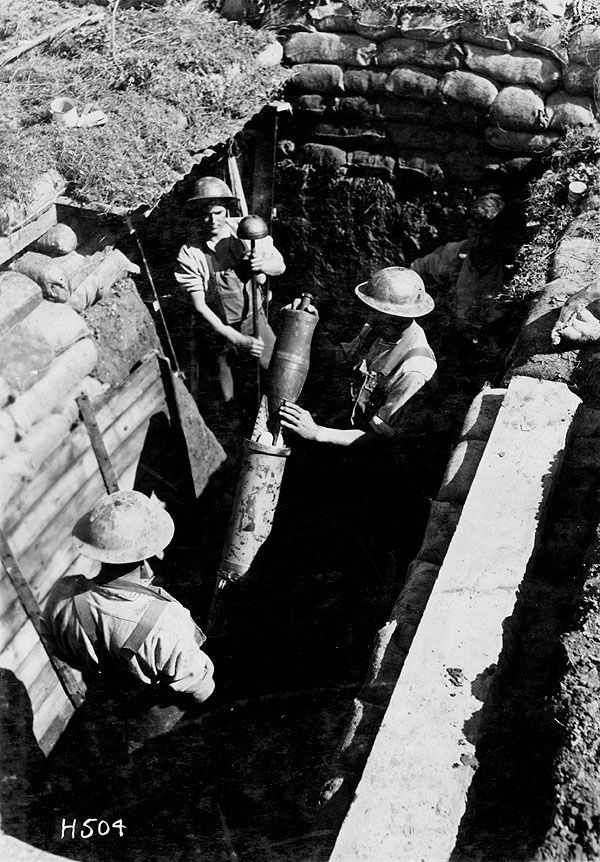
A New Zealand mortar crew about to fire their deadly shell at the enemy
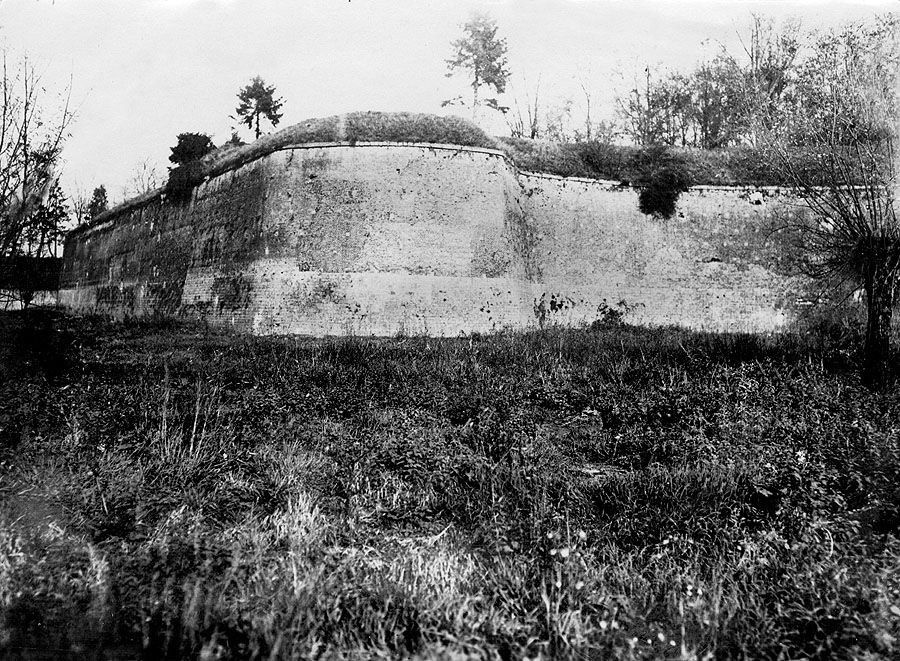
A view of the daunting walls that faced the New Zealand and British troops

Another view of the wall, with a New Zealand soldier on the top providing a scale for the size of thestructure. Note the shell damage to the wall but the fact that the explosives did little damage tothe ancient walls is testiment to their design in the middle ages. This photo was taken after the nattle had ended and the town had been liberated.
The Battle Won...

The New Zealand national flag newly flies in le Quesnoy. The town has been won by the kiwis, and the German flag lowered with the Ensign of the New Zealand Army replacing it.

German prisoners are rallied at a school near to Le Quesnoy
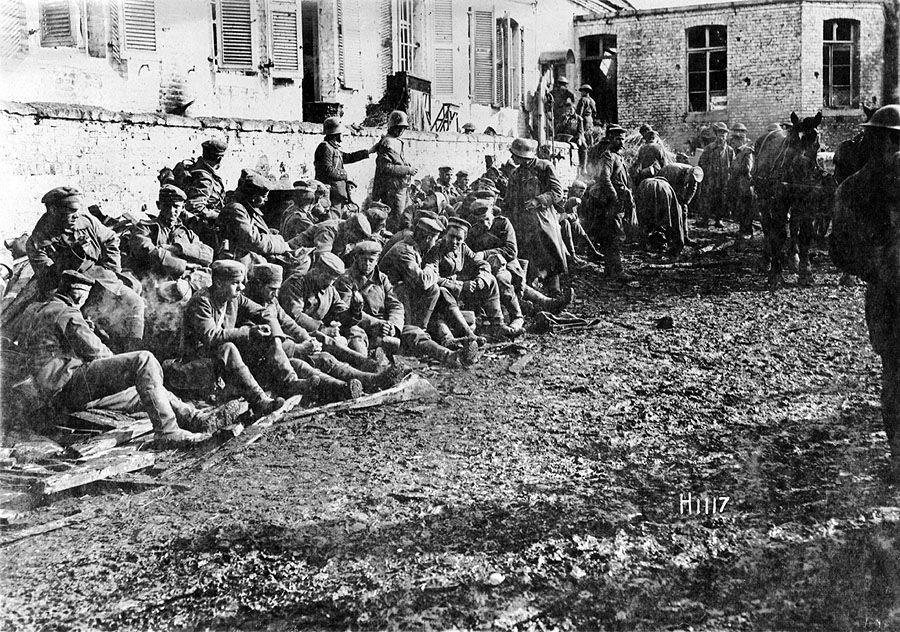
Another view of the german prisoners
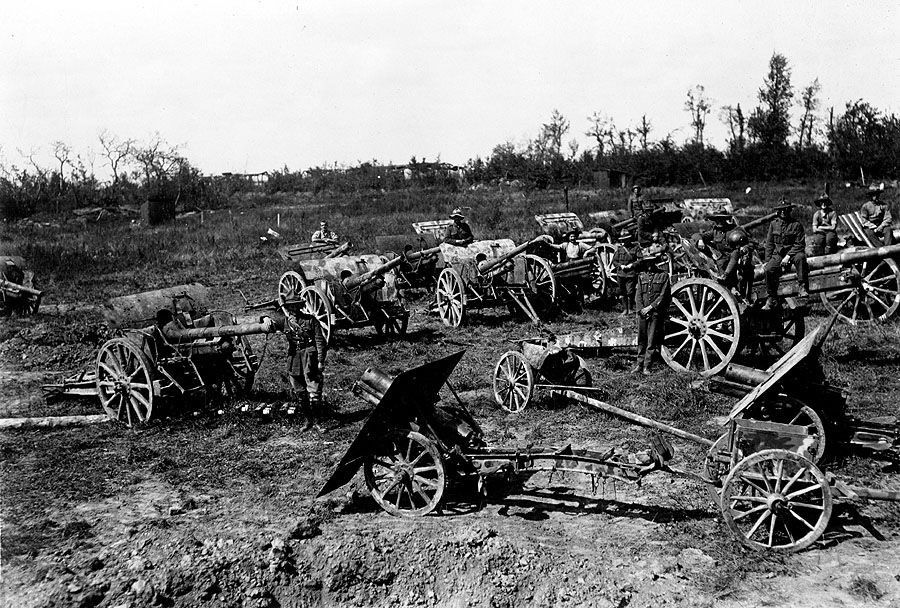
Captured German artillery pieces are amassed in a nearby field
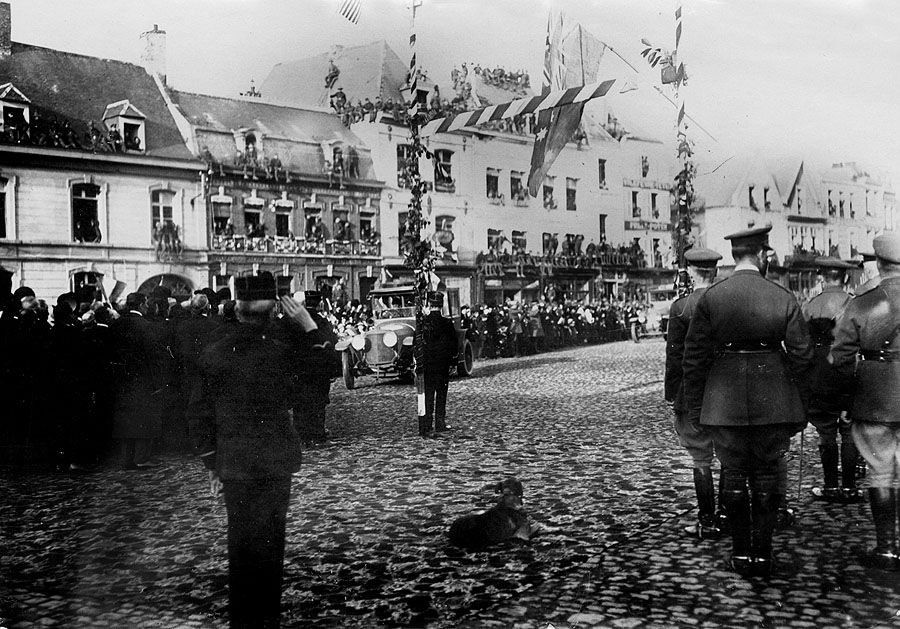
The town celebrates its liberation
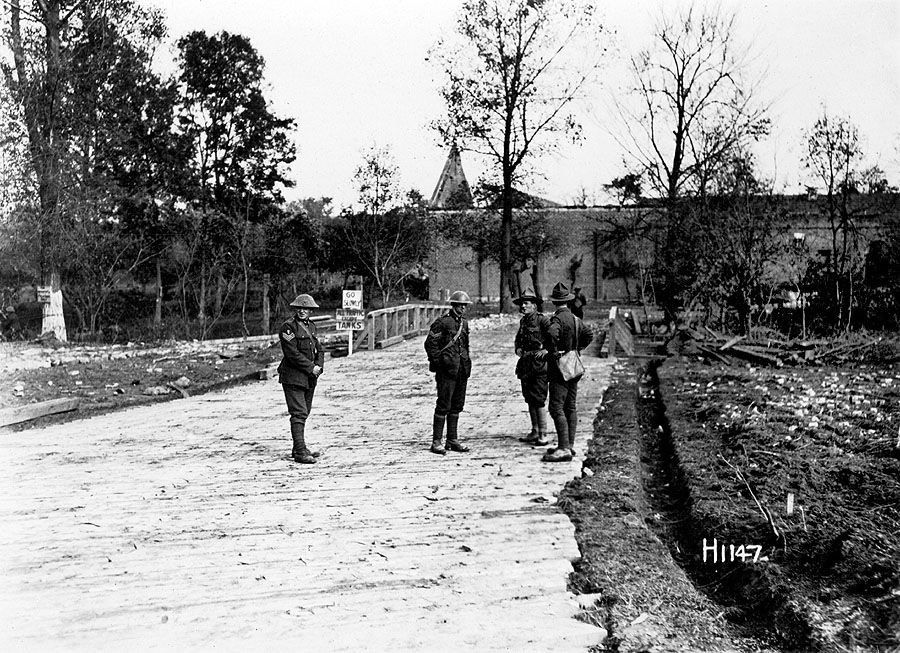
New Zealanders now guard a bridge that allows access to the town of Le Quesnoy.
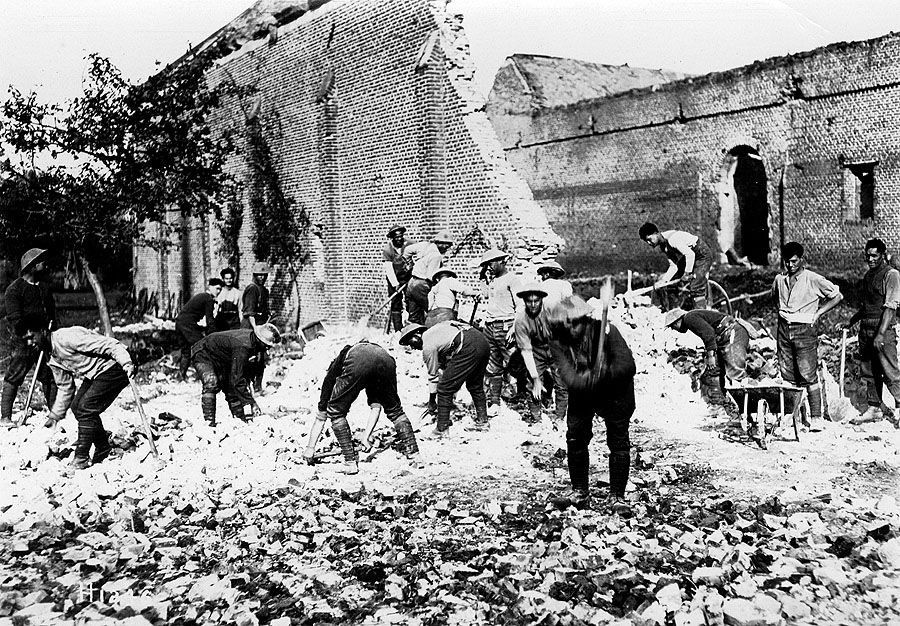
Members of the Maori Pioneer Battalion set to work to help the locals clear away rubble and bomb damage, and clean up the town after the battle. The Maori Pioneer Battalion seldom got into the front line fighting, their main role was essential maintenance behind the lines such as this rubble clearing, or digging trenches. They were hard workers and were extremely efficient at digging trenches, tunnels and other such underground fortifications. It was through this that they earned the nickname of The Diggers from the British troops. It was only later in the war that the Australians began to also get called " diggers " because they wore the same hats as the Maori diggers and the name was bestowed on Aussies through this confusion. It stuck with them and now when the nickname of diggers is mentioned everyone pictures Australian soldiers instead of the Maori Pioneer Battalion boys.
It was widely reported that during the battle it was a member of the Maori Pioneer Battalion, Winiata
Topihana (16135) of Maketu in the Bay of Plenty, who was the first Allied soldier to reach the top of the ramparts. His rifle was thrown up to him by a salvage officer and he was involved in the fire fight. he was however not believed to have been the first soldier to actually enter the town boundaries.
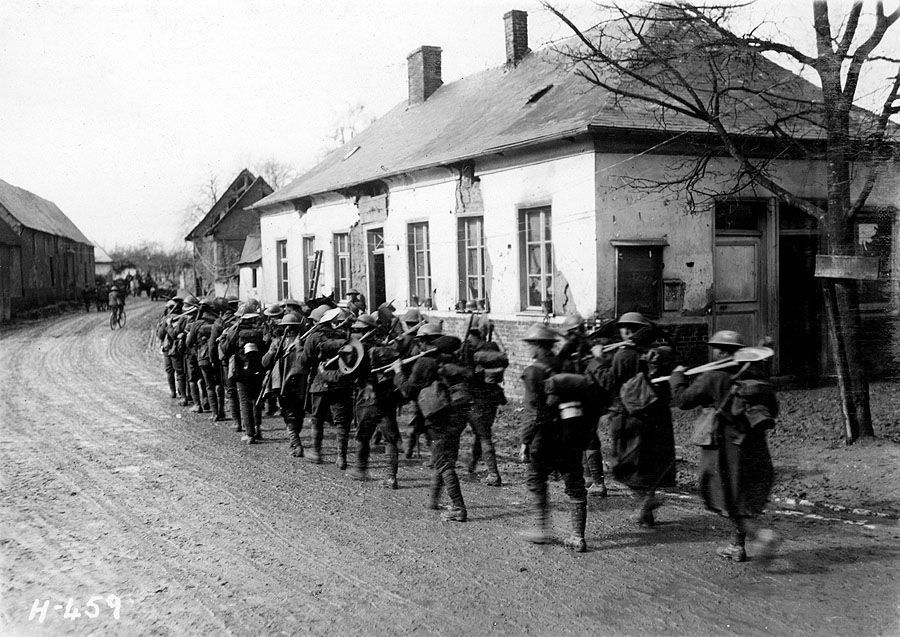
A work party of Kiwi soldiers, with shovels over their shoulders, head off to help clear bomb damage in the region around the town

A New Zealand soldier lends a hand to a local lady to shift some furniture. She has perhaps lost her home in the battle
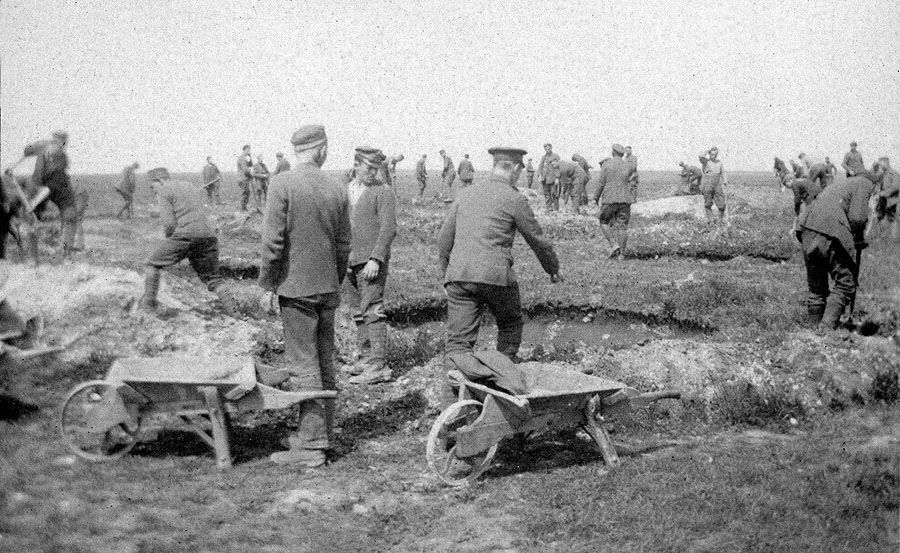
After the battle German prisoners are put to work to fill in the shell holes in the fields around the town

A bridge that was built over the moat by New Zealand Engineers in the week after the battle.
Thanks to Richard Stowers for providing the photographs on this page